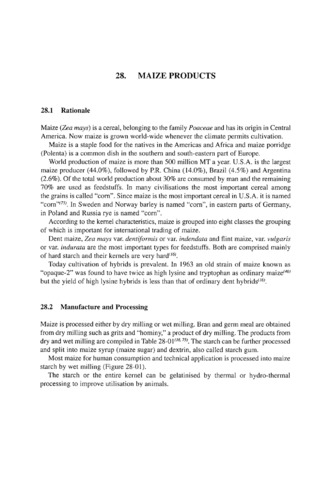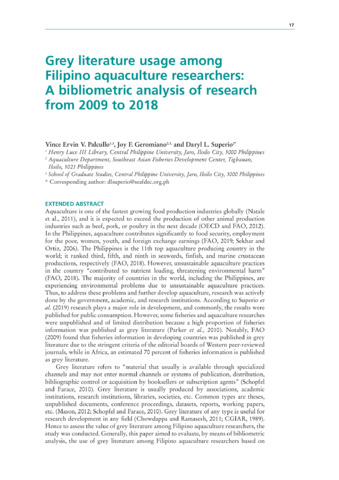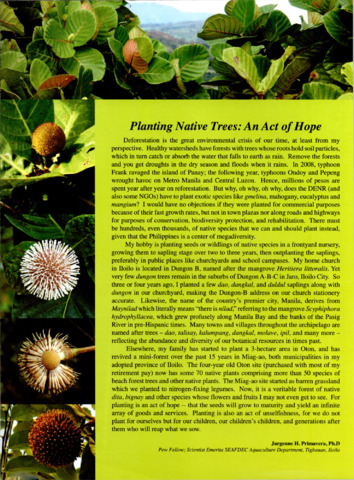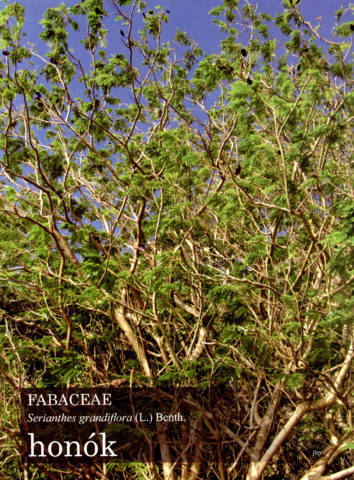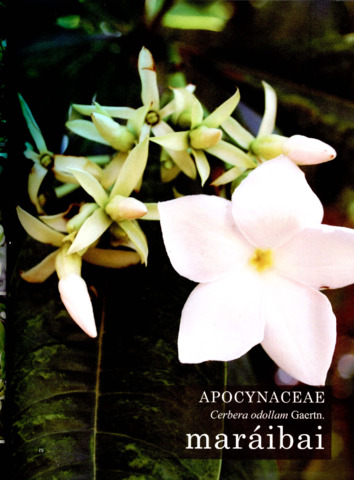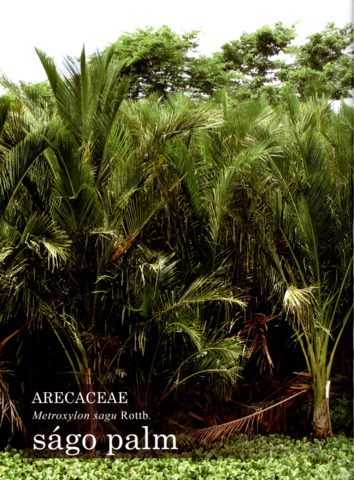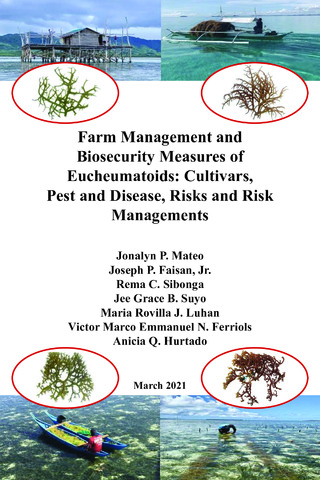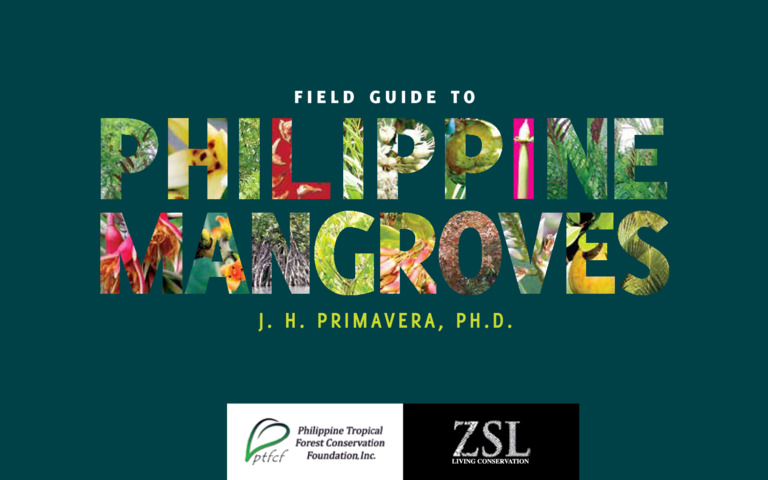Books and Book Chapters: Recent submissions
Now showing items 21-40 of 123
-
Communicating the value of international grey literature: The Aquatic Sciences and Fisheries Abstracts experience
(ALA Editions, 2022)In collaboration with its partners, ASFA has worked across multiple platforms to raise awareness and understanding of the effective promotion of grey literature to the managers and users of this valuable information source. ... -
Maize products
(Springer, 2000)Maize (Zea mays) is a cereal, belonging to the family Poaceae and has its origin in Central America. Now maize is grown world-wide whenever the climate permits cultivation. -
Series: FAO Fisheries and Aquaculture Proceedings;67
Grey literature usage among Filipino aquaculture researchers: A bibliometric analysis of research from 2009 to 2018
(FAO, 2021)Aquaculture is one of the fastest growing food production industries globally (Natale et al., 2011), and it is expected to exceed the production of other animal production industries such as beef, pork, or poultry in the ... -
Production of microalgal paste in the Philippines
(Philippine Science Letters, 2020)Technical advances have made possible the production of microalgal concentrate in paste form. Chaetoceros calcitrans was concentrated and made into an algal paste through centrifugation, chemical flocculation, and electrolytic ... -
Planting native trees: An act of hope
(Green Convergence for Safe Food, Healthy Environment and Sustainable Economy, 2012) -
Fabaceae: Serianthes grandiflora (L.) Benth.: Honók
(Green Convergence, 2018) -
Aquifoliaceae: Ilex cymosa Blume: Páit
(Green Convergence, 2018) -
Apocynaceae: Cerbera odollam Gaertn.: Maráibai
(Green Convergence, 2018) -
"Katunggan it Ibajay" Mangrove Ecopark: A dream come true
(Green Convergence for Safe Food, Healthy Environment and Sustainable Economy, 2012) -
Arecaceae: Metroxylon sagu Rottb.: Ságo palm
(Green Convergence, 2018) -
Biyah diin in pagparagan sin pagtanuman agal agal iban pag'ayad ha pag' urulan sin kabuhi: Binhi atawa tanumun agal agal, manga mangangaun iban kumakangii' iban sakit, manga anib atawa makamula' iban biyah diin in pagpahilunnah sin anib atawa piligru ha pagtanum agal agal
(United Kingdom Research and Innovation-Global Challenge Research Fund (UKRI-GCRF), 2021-03)In buwk-buwk pahati ini nahinang iban kiyasulat paglabay upat tahun ha pagsaliksik ha pag’usaha agal agal ha Pilipinas hinang sin tumpukan sin GlobalSeaweedSTAR Philippine ha bitsara kahatihan sin kamatauran. Makatagama ... -
Pagdumala sa uma sa guso ug mga lakang para sa bayo-sekuridad: Semilya, mga peste ug sakit-sakit, mga risgo ug pagdumala niini
(United Kingdom Research and Innovation-Global Challenge Research Fund (UKRI-GCRF), 2021-03)Gisulat kining brosyur matapos ang upat ka tuig nga panukiduki sa ‘GlobalSeaweedSTAR Philippine Team’ sa industriya sa guso sa Pilipinas gamit ang simple nga sinultian nga daling masabtan sa mga layko. Kini magahatag ug ... -
Pangangasiwa sa taniman at mga hakbang pangbayo-sekyuridad para sa Eucheumatoids: Mga kultibar, peste at sakit, mga risgo o peligro at mga paraan sa pangasiwaan nito
(United Kingdom Research and Innovation-Global Challenge Research Fund (UKRI-GCRF), 2021-03)Ang polyeto na ito ay inihanda at isinulat ng GlobalSeaweedSTAR Philippine Team sa payak na lengwahe matapos ang apat na taong pananaliksik sa industriya ng pag-aalaga ng mga halamang-dagat sa Pilipinas. Nais nito na ... -
Farm management and biosecurity measures of Eucheumatoids: Cultivars, pest and disease, risks and risk managements
(United Kingdom Research and Innovation-Global Challenge Research Fund (UKRI-GCRF), 2021-03)This brochure was prepared and written after four years of research of the seaweed industry of the Philippines by the GlobalSeaweedSTAR Philippine Team in a layman’s language. This provides the different stakeholders of ... -
Field guide to Philippine mangroves
(Zoological Society of London-Philippines, 2009)Awareness of mangrove importance, particularly for coastal protection, has grown among the general public over the past several years. In turn, this has led to numerous planting initiatives by various groups. However, most ... -
Ration reduction, integrated multitrophic aquaculture (milkfish-seaweed-sea cucumber) and value-added products to improve incomes and reduce the ecological footprint of milkfish culture in the Philippines
(AquaFish Collaborative Research Support Program, Oregon State University, 2012)In the Philippines, cage culture of milkfish in marine environments is increasing. The practice uses high stocking densities, with significantly greater inputs of artificial feeds which more often than not, have led to ... -
Alternative feeding strategies to improve milkfish production efficiency in the Philippines
(AquaFish Collaborative Research Support Program, Oregon State University, 2010)In the Philippines, cage culture of milkfish in marine environments is increasing. The practice uses high stocking densities, with significantly greater inputs of artificial feeds which more often than not, has led to ... -
Micro-propagation of Kappaphycus and Eucheuma: Trends and prospects
(Springer International Publishing, 2017)Among the red algae, Kappaphycus and Eucheuma are the two most commercially important carrageenophytes farmed extensively in Southeast Asian countries; they rank top in production in terms of volume of raw material produced. ... -
Philippine Aquatic Wildlife Rescue and Response Manual Series: Marine Turtles
(Marine Wild Fauna Watch of the Philippines, Inc., 2014)This manual addresses the lack of information materials on how to deal with marine turtle encounters in the Philippine seas to ensure that the proper treatment and intervention is provided. The manual also responds to the ... -
Poly-beta-hydroxybutyrate (PHB) and infection reduction in farmed aquatic animals
(Springer International Publishing, 2020)There is a continuous effort in finding effective and sustainable strategies to control diseases in farmed animals, and in recent years, the application of the bacterial storage compound poly-β-hydroxybutyrate (PHB) was ...



